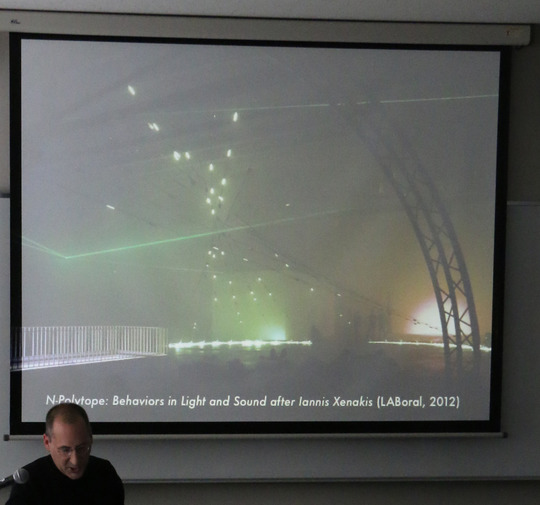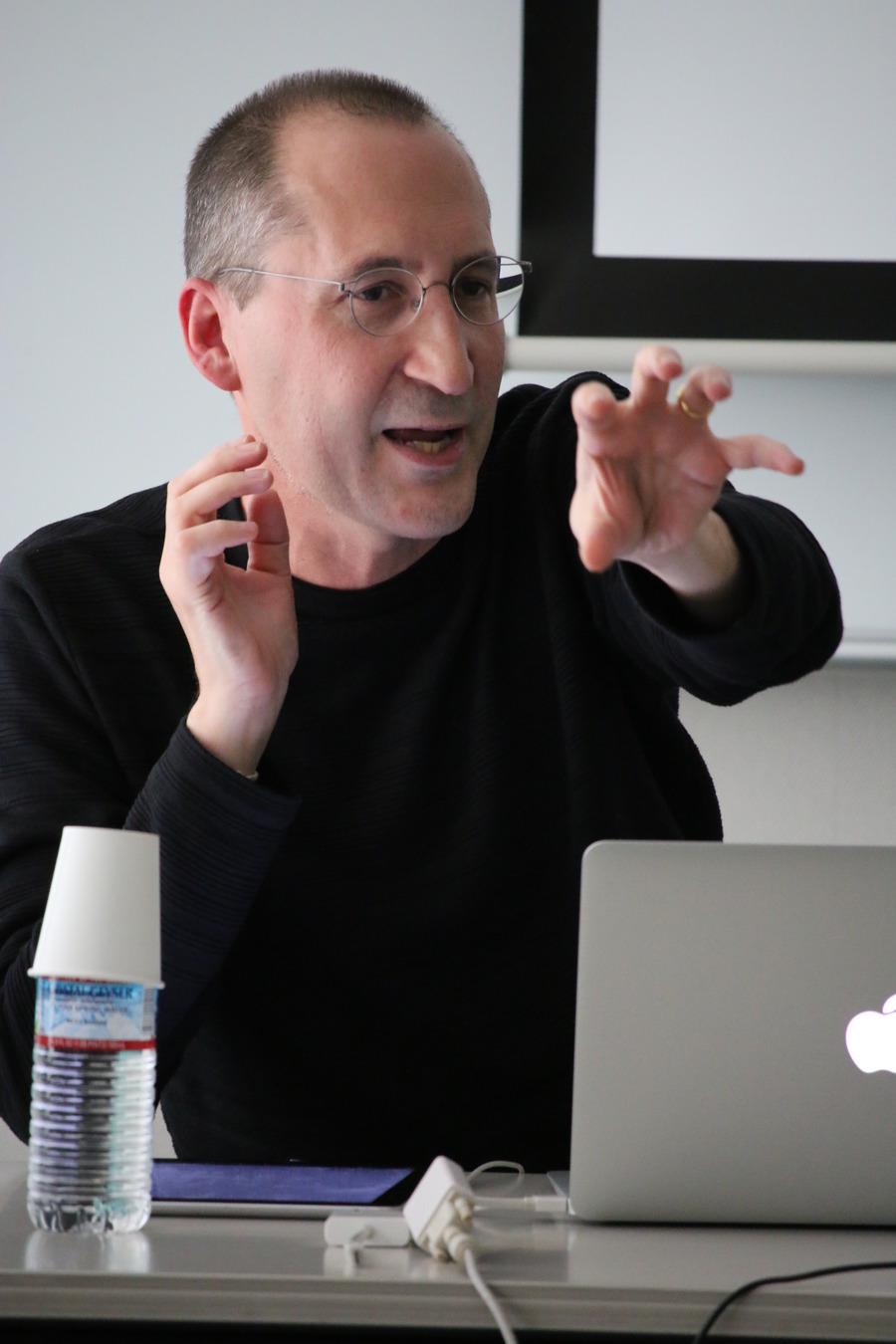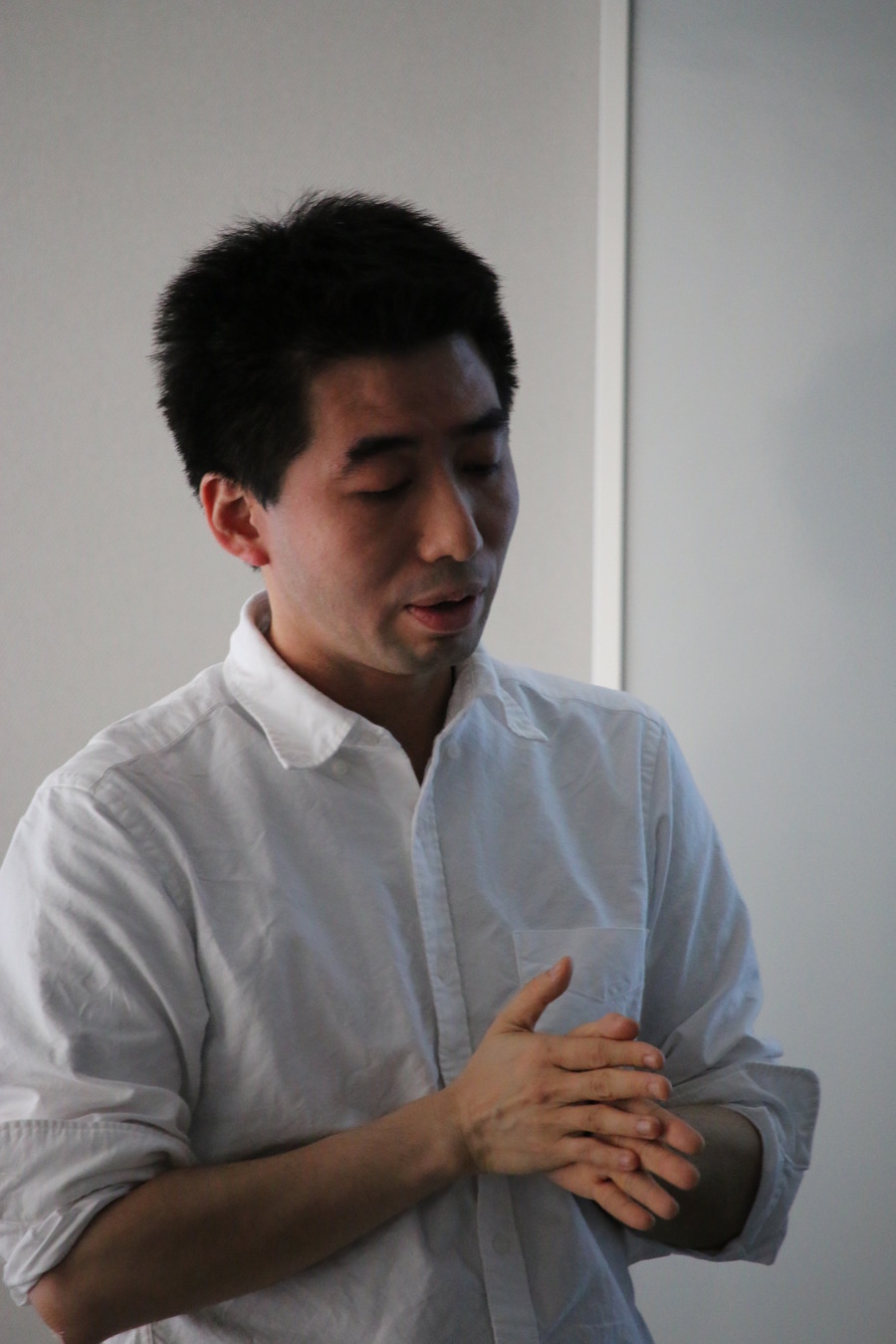
Report: Art/Science/Perception/Event: 3 Perspectives on Perception/Action Marcin Minakata
- Time and Date:
- 15:30-18:00, Sunday, April 17, 2016
- Venue:
- Collaboration Room 3, 4th Floor, Building 18, The University of Tokyo, Komaba
- Speakers:
- Chris Salter (Concordia University) Junji Watanabe (NTT) Takashi Ikegami (The University of Tokyo)
- Organized by:
- The Educational Project 1 "Shape of Life" Integrated Human Sciences Program for Cultural Diversity, The University of Tokyo
It was a pleasure to attend a unique symposium held by Educational Project 1 “Shape of Life” with the theme 3 Perspectives on Perception/Action. An artist, a researcher, and a systems sciences professor sat together to share their work and to debate the issue of perception.

The work of Chris Salter, artist and researcher affiliated with Concordia University, focused on new media. He shared some of his work on sensory topics, including anthropology of the senses. Videos from two of his projects, N-Polytope and Ilinx, provided very different perspectives on the connection between the body and the environment that surrounds us. The videos reinforced the importance of our most vital senses, vision, sound, and touch. Traditionally, artists use old-fashioned means to express their soul, but Chris Salter goes beyond that by integrating new technologies, namely electronic control of light and sound. The key research issues are how the media elements behave, their disordered nature and how they respond to the environment. Ilinx is simply a disoriented environment, where participants have limited sight, hearing, and touch. In such situations, our perspective of our own body and the surrounding environment differs greatly from what we experience daily.

A researcher with NTT, Junji Watanabe’s exploration of communication devices with applied perception has led to some unique inventions. One device, which everyone attending the symposium was able to fully experience, allowed us to feel our own heartbeat. Although the importance of the heart is well known, awareness of the heart on a daily basis is not especially common. Another project that attracted much attention was a reinvented telephone booth. Using modern technology, the booth could send nine different types of touch between participants who could only communicate through the phone booth. Although the need for such a system is minor, it can be a source of much fun among younger generations and can provide new insight into the role of touch in human communication. It is a good example of an innovative project that attracts the attention of those who may have limited interested in the issue.

Takashi Ikegami, a professor in the Department of General Systems Sciences at the University of Tokyo, dealt with the issues of artificial life and autonomous sensor networks. However, as a student with a social science and humanities background, I was unable to follow this part of the symposium very well. Overall, I found the symposium provided an interesting way to see how the fields of art and science meet, how their collaboration is perceived from two different perspectives, and what are some common problems encountered.

報告日:2016年5月20日


